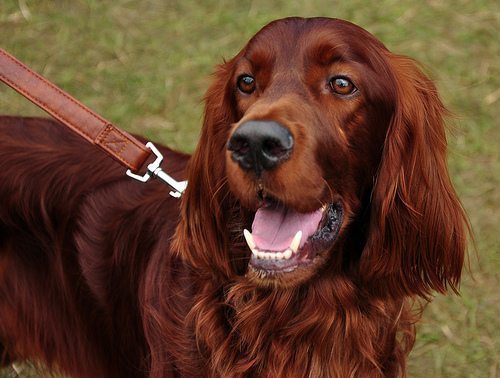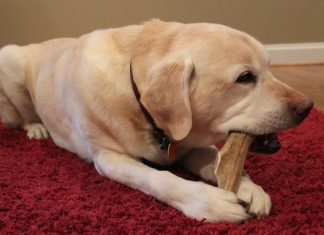The Irish Setter History
The modern Irish Setter can be traced back to the early 18th century. The Setter was bred for hunting; specifically for setting, or locating and pointing out game birds. They are a wide-ranging hunter and are well suited to fields and moorland terrain. They have an excellent sense of smell, which helps to locate the mark and hold a pointing position showing the location of this animal. Setters where developed from a mix of Irish Terrier, Irish Water Spaniel and English Setter in order to be the ideal birding dog.
Breed Description
The Irish Setter is an active bird dog. The head is long and lean. The muzzle is moderately deep with a distinct stop. The nose is either black or brown with wide nostrils. Eyes are medium sized, almond shaped, and wide-set. They are dark to medium brown in color. Ears are low-set, triangular and hang close to the head. The tail is long and feathered. The coat is short and fine on the head and legs, and is of medium length on other parts of the body. Feathering is even longer on the ears, back of the legs, belly and brisket. Coat colors include mahogany to a rich chestnut red. There is no black, but a small amount of white may be on the chest, toes and throat. The Setter weights 65 to 75 pounds and stands 26 to 28 inches high. Their life span is between 11 to 15 years. The Irish Setter is an average shedder. If you can keep the coat free of burrs and tangles, then a light daily brushing is all that is required to keep it in great condition. It needs to be kept free of burrs and tangles. Bathe this breed only when necessary.
Personality and Training
An ideal companion for the Irish Setter would be families, active adults/seniors and joggers/hikers. Apartment life is not recommended for this breed. They do best with a large yard to run. If they do not receive enough exercise, they can become restless and difficult to manage. They greatly enjoy running free in the safety of a large fenced area. Setters have very little guarding instincts, so they generally get along with other pets and are good with children, but as with all pets they should be monitored around young children. Start their training early – if you are diligent and consistent, you’ll find yourself with a well-mannered setter.
Photo: Courtesy of Adam Wyles via Flickr (CC BY-ND 2.0)










